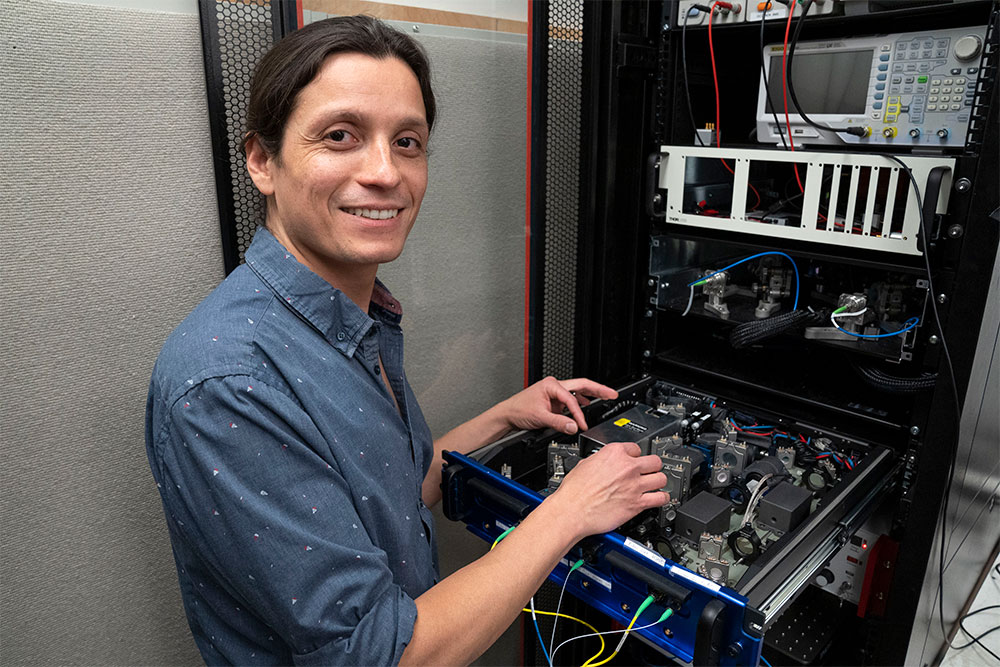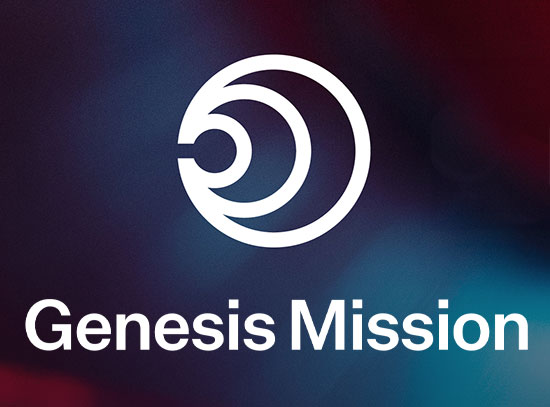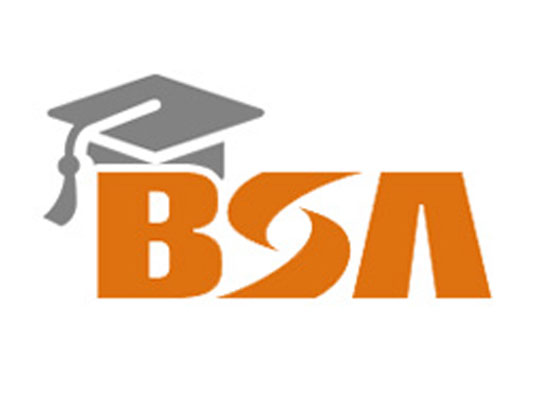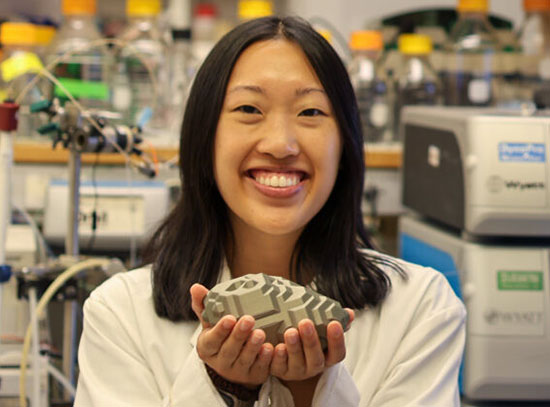Martinez-Rincon Elected Vice Chair of QED-C Committee
Julian Martinez-Rincon will serve the Standards & Performance Metrics Technical Advisory Committee of the Quantum Economic Development Consortium
January 29, 2024
Julian Martinez-Rincon, a quantum scientist at the U.S. Department of Energy’s (DOE) Brookhaven National Laboratory, has been elected vice chair of the Standards & Performance Metrics Technical Advisory Committee (TAC) of the Quantum Economic Development Consortium (QED-C). After serving as vice chair for the 2024 calendar year, he is expected to serve as chair of the TAC for the 2025 calendar year.
QED-C is a collaboration of companies, universities, and national laboratories working to identify and address gaps in quantum technology, standards, and workforce. QED-C is managed by SRI International and the National Institute of Standards and Technology in the U.S. Department of Commerce. The Standards & Performance Metrics TAC, specifically, aims to understand and define the standards and performance metrics of emerging quantum technologies. Their work facilitates the process of bringing the new technologies to market.
“I am excited for the opportunity to serve the quantum community in the United States,” said Martinez-Rincon. “It is an honor to represent Brookhaven National Laboratory and share our quantum research with other leaders in the industry.”
As a scientist in the quantum information science and technology (QIST) laboratory of Brookhaven’s Instrumentation Division, Martinez-Rincon is working to advance the quantum network testbed spanning the distance between Brookhaven Lab and Stony Brook University (SBU). This long-distance quantum network will contribute to the nation’s quantum internet infrastructure. Among several accomplishments, the Brookhaven-SBU team achieved the longest successful quantum communication link experiment in 2020, only two years after the network was established.
Recently, the scientists have been working on a quantum network service for quantum memories separated by 98 miles (158 kilometers). They are also expanding the infrastructure to cover three distance quantum nodes located within Long Island.
“Sharing the quantum network testbed with the larger quantum community was part of why I got involved in QED-C,” explained Martinez-Rincon. “Not only do I get to share our achievements, but I also get to discuss prospective experiments with other experts from academia and the private sector.”
Brookhaven Lab joined QED-C in 2018 as a founding member.
“We recognized the role that industry could play in QIST,” said Gabriella Carini, director of the Instrumentation Division. “Joining QED-C was an excellent opportunity to be informed by and provide solutions to a large network of institutions.”
Martinez-Rincon subsequently joined QED-C and the Standards & Performance Metrics TAC in 2022. At the time, there were only two subcommittees within the TAC—quantum computing and quantum networking. Martinez-Rincon, who conducted doctoral and post-doctoral research on quantum sensing, was motivated to establish a subcommittee for the remaining of three main quantum technologies. Now, he leads the quantum sensing subcommittee and will continue to do so during his tenure as a TAC leader. He is also an active member of the quantum networking subcommittee.
“I am a scientist and academic by training,” he added. “So, it has been an interesting and challenging effort to leave my corner of knowledge and approach the progress of quantum technologies from the economic perspective.”
“It is good to see Brookhaven’s role and representation in QED-C growing,” Carini said. “I am happy to have a Brookhaven scientist hold a leadership role in the consortium, and I look forward to the continued collaborations with other institutions pursuing QIST.”
Martinez-Rincon received a bachelor’s degree and a master’s degree in physics from the National University of Colombia in 2007 and 2008, respectively. He also received a master’s degree in physics from the University of South Carolina in 2010 and a Ph.D. in physics from the University of Rochester in 2017. He conducted postdoctoral research at Stanford University for four years before joining Brookhaven in 2021. He is also the point of contact for the Quantum Network Facility at Brookhaven National Laboratory.
Brookhaven National Laboratory is supported by the Office of Science of the U.S. Department of Energy. The Office of Science is the single largest supporter of basic research in the physical sciences in the United States and is working to address some of the most pressing challenges of our time. For more information, visit science.energy.gov.
Follow @BrookhavenLab on social media. Find us on Instagram, LinkedIn, X, and Facebook.
2024-21679 | INT/EXT | Newsroom










